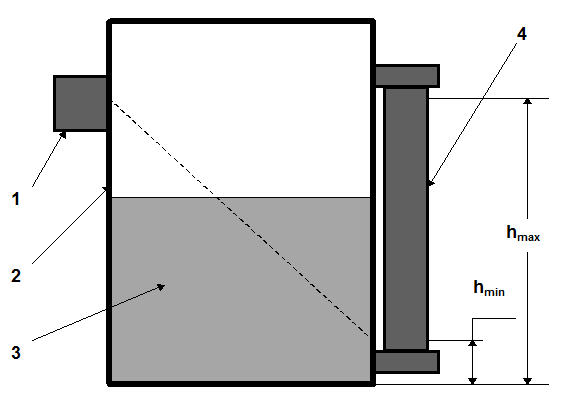The phenomenon of reducing the intensity of gamma radiation when passing through liquids or solids is used in nucleonic devices for measurement of level of liquids and solids. Fig. presents radiation-type level detector.
A small quantity of radioactive substance (Cobalt 60, Radium 226, etc.) is placed in a source unit 1. This unit is attached to the wall of a tank 2 filled with a substance 3 which level is to be measured. A radiation detector 4, usually Geiger-Mueller tubes, is fixed to the wall of the tank on the opposite side of the tank. The intensity of gamma-radiation detected by the detector decreases with the increase of the level of a substance.
The absorption of gamma-radiation by the wall of the tank is constant, whereas that of the gas space above the substance is negligible. A gamma-detector converts the gamma-radiation into the output signal (a series of small current pulses). This signal then is converted into a standard electrical signal, which can be measured by a secondary device or fed into a controller.

An accuracy of these devices can achieve +/- 1% of the span. The advantage of nucleonic level devices is that nothing comes in contact with the substance under measurement. Among disadvantages we can note the high cost and the difficulties with handling of radioactive materials.